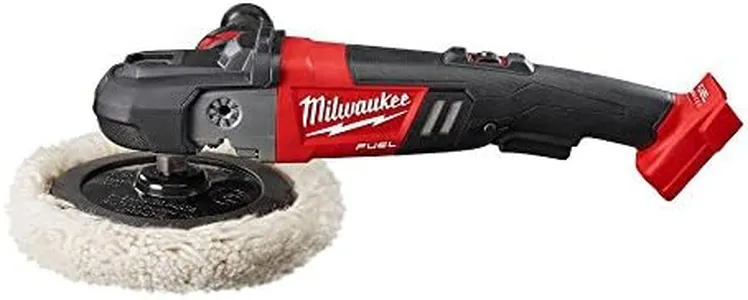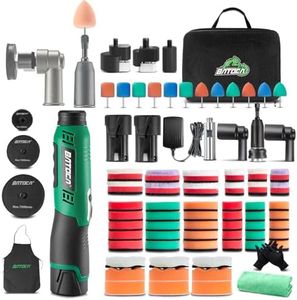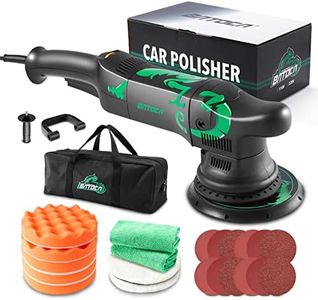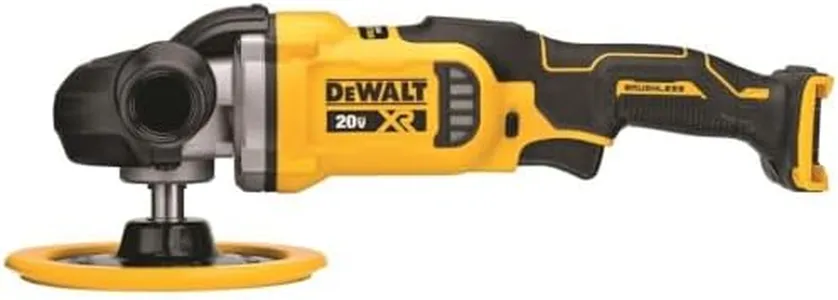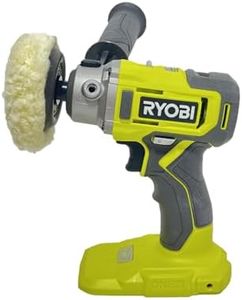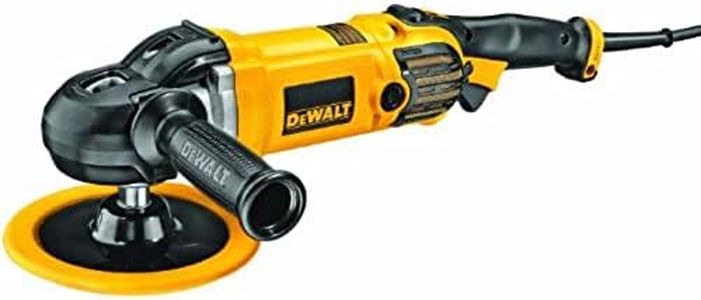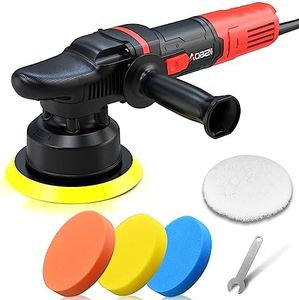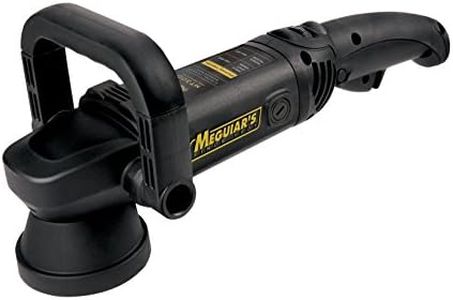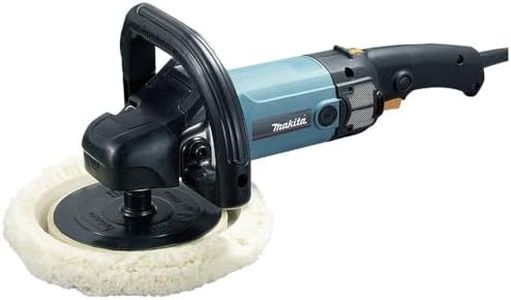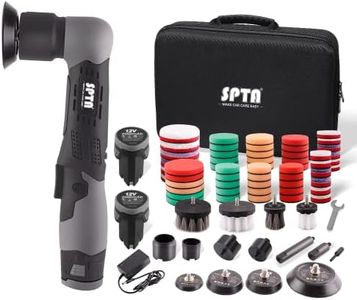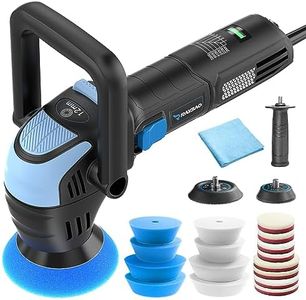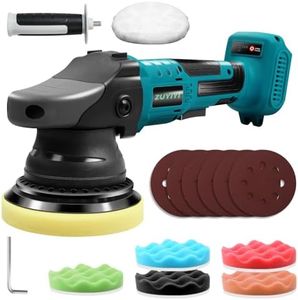We Use CookiesWe use cookies to enhance the security, performance,
functionality and for analytical and promotional activities. By continuing to browse this site you
are agreeing to our privacy policy
10 Best Car Polisher Buffers
From leading brands and best sellers available on the web.Buying Guide for the Best Car Polisher Buffers
When shopping for a car polisher buffer, it's important to focus on your skill level, the type of jobs you want to handle, and how regularly you'll use the tool. Car polishers come with different features, each making them better suited for certain uses. By understanding what various specs mean, you’ll be able to choose a polisher that helps you achieve great results without being too difficult to handle or maintain.Type (Rotary vs. Dual Action/Random Orbital)The type of polisher refers to the movement style of the pad—either rotary or dual action (sometimes called random orbital). Rotary polishers spin in a circular motion and are powerful and effective for removing heavy scratches, but they require skill to avoid damaging paint. Dual action polishers move both in a circular and oscillating motion, making them safer for beginners and better for general polishing and light correction. Choose a rotary if you have experience and need more correction, but stick to dual action for general use and safety.
Power (Wattage/Amp Rating)Power in polishers is usually shown by wattage or amps, and it determines how much force the machine can produce. Higher power helps work faster and handle tough jobs, but might make the tool heavier and harder to control, especially for long sessions. Light-duty (400-600 Watts) suits spot jobs and maintenance, medium (600-900 Watts) fits most car hobbyists, while heavy-duty (over 900 Watts) is fit for frequent or professional use. Match the power to your workload and how comfortable you are with heavier tools.
Speed (OPM/RPM Range and Adjustability)Speed is measured in OPM (orbits per minute) for dual action and RPM (revolutions per minute) for rotary models. Tools with adjustable speeds let you customize performance for different jobs: low speeds for waxing or spreading polish, higher speeds for paint correction. Typical ranges go from around 1,500 to 6,800 OPM/RPM. If you're a beginner or doing delicate jobs, look for wider adjustability at the lower end.
Pad SizePad size is the diameter of the polishing disc, typically ranging from 3 to 7 inches. Larger pads (6–7 inches) cover ground fast and are good for big, flat surfaces, but struggle in tight areas. Smaller pads (3–5 inches) offer better control and can get into narrow spots, but require more time to finish larger sections. Choose pad size based on your car’s size, shape, and the detail of work you want to accomplish.
Weight and ErgonomicsThe weight of the polisher, along with its grip and overall balance, affects how comfortable it is to use, especially for long sessions. Heavier machines can be tiring but often are more powerful, while lighter ones are best for beginners and easy handling. If you'll be working a lot or have smaller hands, focus on lighter models with a good grip.
Vibration and Noise LevelsVibration and noise add to user fatigue and affect comfort during use. Models with features to reduce vibration or noise tend to be more pleasant over long periods. If you’re sensitive to loud sounds or plan to use the tool often, pay attention to user reviews or specs mentioning lower vibration and quieter operation.
Corded vs. CordlessSome polishers are corded (run off power outlets) and others are cordless (battery-powered). Corded polishers provide non-stop power but limit mobility, while cordless ones let you move easily around the car but need battery charging and might have less power. If you work in your garage near power, corded works well, but in parking lots or for mobile jobs, consider cordless convenience.
